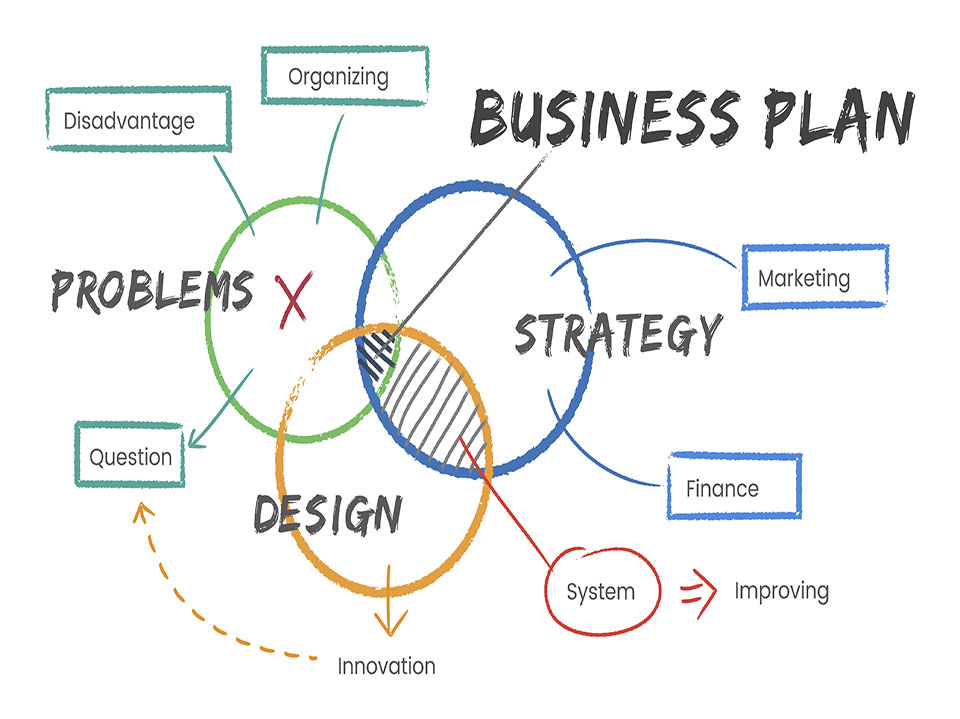Importance of Market Segmentation in Developing Effective Marketing Strategies
You’ve spent time and money developing the ideal product, and now you want it to be recognized in the market. You cannot, however, cure everyone’s problem or appeal to everyone. This is precisely why you should contact your critical customers. The market segmentation jigsaw piece comes into play and here we will understand the importance of market segmentation.
What is market segmentation?
Market segmentation is the process of creating separate divisions within a large, homogeneous market of potential customers. Customers are classified based on whether they meet standards or have characteristics that cause them to have similar product needs. Customers who respond similarly to marketing activities are classified as segments. They share comparable aims, desires, and requirements.
Most firms lack the resources required to target a large number of people. As a result, they must concentrate on the specific market segment that necessitates their service. They divide the market into comparable and recognisable segments through market segmentation.
What types of market segments can a company have?
DEMOGRAPHIC SEGMENTATION: THE WHO
One of the most basic yet efficient types of segmentation is demographic segmentation. Based on objective data, it is utilised to segment the audience and generate customer personas, such as: 
-       Age
-       Gender
-       Income
-       Level of education
-       Religion
-       Profession/role in a company
For example, if you segment your audience depending on their income, you may target them with products that fit within their financial limits. This is a simple segmentation if you have a small firm or are new to eCommerce.
PSYCHOGRAPHIC SEGMENTATION: THE WHY
It is the practice of categorising audiences based on shared personal values, political beliefs, goals, and psychological features.
For example, you can group customers according to their: 
-       Personality
-       Hobbies
-       Social status
-       Opinions
-       Life goals
-       Values and beliefs
-       Lifestyle
¬†Psychographics is the most difficult-to-identify category, but it is also the most useful. Although your audience analytic tools and social media are the greatest places to get data for psychographic segmentation, you should also use surveys, interviews, and focus groups to deepen your customer understanding in this segment. You can learn a lot about your consumers’ likes, dislikes, needs, wants, and loves by using psychographic segmentation. You may then design marketing efforts that are relevant to their psychographic profile.
GEOGRAPHIC SEGMENTATION: THE WHERE
It is the process of categorising customers depending on where they reside and shop. People that share the same city, state, or zip code have comparable requirements, mindsets, and cultural preferences. 
The true benefit of geographic segmentation is that it provides insight into what your clients’ location says about a variety of geo-specific elements, such as their:¬†
-       Climate
-       Culture
-       Language
- ¬† ¬† ¬† Population density ‚Äď (urban vs rural)
You’ll need to analyse your data, like with any market segmentation strategy, to determine how each element affects your clients’ purchasing behaviour. People living in colder climates, for example, are more likely to be interested in winter clothes and home heating appliances.
BEHAVIORAL SEGMENTATION: THE HOW
The method of grouping clients based on common habits they exhibit when interacting with products/brands is known as behavioural segmentation.
For this form of segmentation, you can divide your audience into groups based on: 
-       Spending habits
-       Purchasing habits
-       Browsing habits
-       Interactions with your brand
-       Loyalty to your brand
-       Product feedback
¬†Using your website analytics, you may find trends in your consumers’ activity that can assist forecast how they will interact with your business in the future. Then you may use this hypothesis to deliver personalised recommendations that meet the demands of your customers. Spotify, for example, offers its users personalised daily mixes based on the genres and artists they’ve previously listened to.
The four pillars of market segmentation are demographic, psychographic, geographic, and behavioural, but consider adding these four additional categories to supplement your marketing efforts.
TECHNOGRAPHIC SEGMENTATION
People are classified as technographic segments depending on the technology they use and how they engage with it. For example, when launching a new product, you may categorise early adopters of new technology and target them. Alternatively, you might offer customers discounts based on the device they use to shop online. You could, for example, show Apple products to Safari users.
GENERATIONAL AND LIFE STAGE SEGMENTATION
Generational segmentation goes beyond demographic segmentation by classifying clients by generation – Boomers, Gen Z, Millennials, and so on. Customers can also be segmented based on criteria such as marital status, property ownership, and number of children. Bank of America, for example, successfully implemented life stage segmentation into their digital marketing approach. When consumers signed up for their Family Life Banking programme, they were asked to define their life stage circumstances. Customers were then led to a microsite built exclusively for that segment.
FIRMOGRAPHIC SEGMENTATION
Firmographic segmentation is a tool used by B2B businesses to generate more effective marketing campaigns. It differs from other segmentation in that most of them are D2C, whereas firmographic is mostly for B2C. Firmographic segmentation, like demographic segmentation, is the process of analysing and classifying B2B consumers based on shared firm characteristics. To build firmographic consumer categories, consider the following seven factors: 
-       Industry
-       Location
-       Company size
-       Status
-       Number of employees
-       Performance
-       Executive title
-       Sales cycle stage
 Finally, market segmentation is critical for creating efficient marketing strategies. It allows organizations to obtain a better understanding of their customers, target their marketing efforts, boost efficiency, gain a competitive advantage, and drive product development. Businesses can produce better results, create deeper customer relationships, and ultimately enhance their bottom line by adapting their strategy to certain segments. hence Market agencies understand the importance of market segmentation.
AN OVERVIEW OF HOW A MARKET SEGMENTATION LOOKS LIKE
Consider the following market segmentation scenario for a skincare company. Based on several features, they have established three separate market segments: 
Segment 1: Young Professionals
-       Demographics: Working professionals between the ages of 25 and 35.
-       Psychographics: Career-driven, health-conscious, and social media-active.
-       Behaviours: Willing to spend money on high-quality skincare products, seek convenience, and appreciate time-saving solutions.
-       Needs: Skincare products that address stress-related skin concerns, give anti-ageing benefits, and are easy to include in their hectic schedules.
- ¬† ¬† ¬† Marketing Approach: Highlight the skincare line’s efficacy and time-saving benefits, provide expert testimonials, and use social media platforms to increase brand recognition and engagement.
Segment 2: Mature Women
-       Demographics: 45-60 years old, suburbia dweller, career or family-orientated.
-       Psychographics: Value self-care, are concerned about ageing, and look for reputable companies.
-       Behaviours: Regular skincare routine, willingness to spend money on high-quality products, and reliance on recommendations from friends and family.
-       Needs: Anti-aging skincare products that improve skin vitality and address specific issues such as wrinkles and sagging.
- ¬† ¬† ¬† Marketing Approach: Highlight the skincare line’s anti-aging characteristics, underline product performance through before-and-after testimonies, and use testimonials from delighted consumers in a comparable age group.¬†
Segment 3: Natural and Organic Enthusiasts
-       Demographics: All ages, environmentally conscious, health-conscious.
-       Psychographics: Prefer natural and organic products, value sustainability.
-       Behaviours: Read ingredient labels, do your homework before buying, and actively seek out eco-friendly and cruelty-free companies.
-       Needs: Skincare products with natural and organic ingredients, sustainable packaging, and eco-friendly practices.
- ¬† ¬† ¬† Marketing Approach: Emphasise natural and organic materials, eco-friendly packaging and manufacturing techniques, and the brand’s dedication to sustainability.
The skincare company may adjust their product offers, marketing messaging, and distribution channels to effectively reach and address the individual demands of each category by segmenting the market into these three separate categories. This strategy enables them to efficiently allocate resources and develop tailored marketing campaigns that resonate with the identified consumer demographics.
CONSUMER PERSONA FOR MARKET SEGMENTATION
Considering the above example of a skincare company, how should a consumer persona look for market segmentation is elaborated below. 
Name: Sarah Johnson
Demographics: 
-       Age: 27
-       Gender: Female
-       Occupation: Marketing Executive
-       Income: $60,000/year
-       Location: Urban area
Background:
-       Sarah is a health-conscious young adult who values self-care and maintaining a healthy lifestyle.
-       She leads a busy and fast-paced life due to her demanding job.
-       She is active on social media platforms and follows influencers for beauty and skincare tips.
-       Sarah is interested in trying new skincare products and stays updated on the latest trends.
-       She prefers a minimalist skincare routine that fits into her busy schedule.
Goals and Motivations:
-       Maintain healthy and glowing skin.
-       Address specific skin concerns such as occasional breakouts and dryness.
-       Achieve a natural and youthful appearance.
-       Stay informed about skincare trends and innovations.
-       Discover effective and convenient skincare solutions.
Challenges and Pain Points:
-       Limited time for extensive skincare routines due to work commitments.
-       Occasional breakouts and skin sensitivity.
-       Overwhelmed by the abundance of skincare products and information.
-       Balancing a busy social life with maintaining a consistent skincare routine.
-       Finding skincare products that are suitable for her skin type and address specific concerns.
Key Influencers:
-       Skincare influencers and bloggers who provide tips, product recommendations, and educational content.
-       Social media platforms like Instagram and YouTube, where Sarah discovers new products and stays updated with the latest trends.
-       Friends and colleagues who share their skincare experiences and recommendations.
Preferred Channels:
-       Social media platforms for beauty and skincare inspiration and product discovery.
-       Online beauty and skincare communities and forums for exchanging knowledge and experiences.
-       Skincare brand websites and online retailers for product information and purchasing.
Messaging and Marketing Approach:
-       Emphasize the convenience and effectiveness of the skincare products, highlighting their ability to fit into a busy lifestyle.
-       Showcase before-and-after transformations and success stories from other young professionals.
-       Provide educational content on skincare tips, ingredient knowledge, and addressing common skincare concerns.
-       Engage with the community through social media platforms and user-generated content.
-       Offer sample sizes or trial kits to encourage product experimentation and discovery.
By creating and understanding this consumer persona, the skincare company can develop targeted marketing strategies, product offerings, and messaging that resonates with Sarah and address her specific needs and preferences. This approach enables the company to build a stronger connection with its target audience and increase the likelihood of attracting and retaining customers like Sarah




